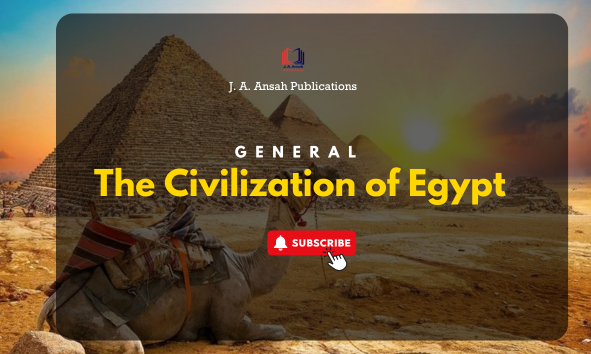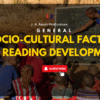The Civilization of Egypt
The ancient Egyptian civilization is one of the oldest and most remarkable cultures in human history. Emerging around 3100 BCE, it flourished along the fertile banks of the Nile River for over three millennia. Renowned for its monumental architecture, advanced knowledge, and profound spirituality, Egypt left an indelible mark on the world.
Geography and Environment
The Nile River was the lifeblood of ancient Egypt. It provided water for agriculture, transportation, and a natural barrier against invasions. The annual flooding of the Nile deposited nutrient-rich silt, ensuring abundant harvests and sustaining a thriving population. This unique environment fostered the development of a centralized society with a stable economy. The predictable nature of the Nile’s flooding allowed the Egyptians to develop a calendar system, which was vital for agricultural planning and religious ceremonies. This environmental stability contrasted sharply with the arid desert surrounding the Nile, making the river valley a cradle of life and prosperity.
The Nile’s significance extended beyond sustenance; it was a major trade route connecting Egypt to neighboring regions such as Nubia and the Levant. Goods like gold, ivory, and exotic animals flowed through these trade networks, enriching Egyptian society and fostering cultural exchange. The river’s importance was also reflected in religious beliefs, with the Nile often personified as Hapi, the god of inundation and fertility.
Government and Society
Egyptian society was hierarchical, with the pharaoh at the apex as both a political and religious leader. Believed to be a living god, the pharaoh wielded absolute power. This divine kingship legitimized their rule and ensured societal cohesion. Pharaohs like Ramses II and Hatshepsut left enduring legacies through monumental constructions and successful military campaigns.
Beneath the pharaoh were the priests, nobles, and officials who managed the kingdom’s affairs. Priests played a crucial role as intermediaries between the gods and the people, overseeing rituals and maintaining temples. Nobles and officials were responsible for administration, tax collection, and law enforcement, ensuring the kingdom’s smooth functioning.
The majority of the population consisted of farmers, laborers, and artisans. Farmers worked the land, producing crops like wheat and barley, which formed the basis of the Egyptian diet. Artisans and craftsmen, highly skilled in their trades, created intricate jewelry, pottery, and statues, contributing to Egypt’s cultural and economic vitality. Despite the rigid social hierarchy, there was some social mobility, particularly for scribes, who were highly respected for their literacy and administrative skills.
Achievements and Innovations
- Architecture: Ancient Egyptians are renowned for their colossal structures, such as the pyramids of Giza and the temples of Karnak and Luxor. These monuments reflect their architectural ingenuity and religious devotion. The Great Pyramid of Giza, one of the Seven Wonders of the Ancient World, remains an enduring symbol of human achievement. These architectural feats required advanced knowledge of mathematics and engineering, as well as a highly organized workforce.
- Writing: Hieroglyphics, the intricate writing system of the Egyptians, enabled the recording of history, religious texts, and administrative records. The Rosetta Stone later became a key to deciphering this script, unlocking the secrets of ancient Egyptian culture. Papyrus, an early form of paper made from the papyrus plant, facilitated the recording and dissemination of knowledge.
- Medicine and Science: Egyptian physicians excelled in medicine, performing surgeries and creating remedies from natural ingredients. Texts like the Ebers Papyrus provide insight into their medical practices, which included treatments for wounds, diseases, and even dental problems. They also made advancements in mathematics and engineering, enabling precise construction and land management. Their understanding of geometry was particularly advanced, aiding in the construction of pyramids and the measurement of land boundaries.
- Astronomy: The Egyptians closely observed the skies, developing a calendar based on lunar and solar cycles. This calendar not only regulated agricultural activities but also aligned with religious festivals, demonstrating their integration of science and spirituality.
Religion and Beliefs
Religion permeated every aspect of Egyptian life. The Egyptians were polytheistic, worshiping gods associated with natural elements and human activities, such as Ra (the sun god) and Osiris (the god of the afterlife). Temples dedicated to these deities were centers of worship and community life, often serving as economic hubs.
They believed in an eternal afterlife and meticulously prepared tombs with goods and rituals to ensure safe passage to the next world. The process of mummification exemplifies their emphasis on preserving the body for the afterlife, reflecting their deep-seated beliefs in immortality. The Book of the Dead, a collection of spells and prayers, guided the deceased through the challenges of the afterlife, ensuring a favorable judgment by Osiris.
Religious festivals and rituals played a significant role in uniting communities. The Opet Festival, for example, celebrated the renewal of the pharaoh’s divine power, reinforcing the bond between the ruler and the gods. These events also provided an opportunity for communal participation and celebration, strengthening societal cohesion.
Art and Culture
Egyptian art, characterized by its distinctive style and symbolism, served both functional and aesthetic purposes. Statues, paintings, and carvings often depicted gods, pharaohs, and daily life, providing insight into their beliefs and societal structure. The use of proportion and perspective in art was guided by strict conventions, ensuring consistency and adherence to cultural norms.
Music and dance were integral to Egyptian culture, accompanying religious ceremonies, festivals, and private celebrations. Instruments like harps, flutes, and drums were commonly used, and music was believed to have divine origins, often associated with Hathor, the goddess of music and joy.
Legacy
The legacy of ancient Egypt endures through its contributions to art, architecture, science, and governance. Its influence can be seen in modern culture, from literature and film to architecture and design. The preservation of historical sites like the pyramids and the Sphinx continues to fascinate people worldwide, drawing millions of visitors each year.
Egypt’s impact on neighboring civilizations, such as Greece and Rome, is evident in their adoption of Egyptian art, religion, and scientific knowledge. The study of this civilization not only illuminates the past but also inspires future generations to explore the depths of human potential and creativity.
In conclusion, the civilization of Egypt remains a testament to human creativity, resilience, and the enduring quest for knowledge and meaning. Its achievements continue to captivate scholars and enthusiasts alike, serving as a bridge between the ancient and modern worlds.



